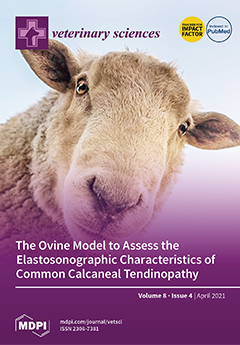The unicellular spore-forming parasites
Nosema apis and
Nosema ceranae are considered to be one of the causes of increased honey bee mortality in recent years. These pathogens attack their honey bee hosts through their gut, causing changes in behavioral stress responses and possibly
[...] Read more.
The unicellular spore-forming parasites
Nosema apis and
Nosema ceranae are considered to be one of the causes of increased honey bee mortality in recent years. These pathogens attack their honey bee hosts through their gut, causing changes in behavioral stress responses and possibly resulting in decreased honey yield and increased honey bee mortality. The present study aimed to determine the prevalence of
Nosema spp. (nosemosis) in Estonia and Latvia, as well as the persistence of the disease in previously infected hives. Currently,
N. ceranae is considered the most virulent species and is predominant worldwide. However, in some regions, usually with colder climates,
N. apis is still prevalent. To achieve better disease control, it is important to determine the species distribution. For this purpose, we selected 30 apiaries in Estonia and 60 in Latvia that were positive for
Nosema spp. in the EPILOBEE (2012–2014) study, which was 5 years prior to the present study. The results show that, while both species are present in Estonia and Latvia,
N. apis is dominant in Estonia (43%), and
N. ceranae is dominant in Latvia (47%). We also found that the pathogens are very persistent, since 5 years later, only 33% of infected apiaries in Estonia and 20% of infected apiaries in Latvia, we could not detect any pathogens at the time of sampling.
Full article






